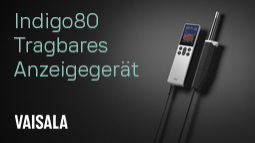Expert interview − new pharmaceutical forms on the advance
TechnoPharm, Europe’s leading trade show for sterile processing technology for pharmaceuticals, food and cosmetics, will take place in Nuremberg from 30 September to 2 October 2014. In parallel, prominent experts in the sector will present more than 60 talks about the state of the art. Highlights will be the forum on serialisation for pharmaceutical manufacturers, a series of talks by the German Packaging Institute and a specialist presentation on orodispersible tablets by Prof. Dr. Jörg Breitkreutz, Director of the Institute of Pharmaceutical Technology and Biopharmacy at Dusseldorf University and Chairman of the Association for Pharmaceutical Technology, the Fair’s Honorary Sponsor. In this expert interview, Prof. Breitkreutz offers a preview of the innovative subject he will be speaking on during the TechnoPharm specialist forum at 1:30 p.m. on 1 October.
What are orodispersible pharmaceuticals (ODX)?
Prof. Dr. Jörg Breitkreutz: ODX disintegrate in the mouth in just a few seconds. This means you can take them without additional liquid. Most orodispersible forms release the active ingredient quickly, which then either acts locally on the oral mucosa, reaches the bloodstream directly via the oral mucosa, or can be taken up via the gastrointestinal tract after the saliva containing the pharmaceutical is swallowed.
What is the particular benefit of the mini-tablets that you have developed?
Prof. Breitkreutz: Orodispersible mini-tablets are very small tablets (with a diameter of, say, two millimetres), which disintegrate in the mouth immediately, in less than three seconds. This means that the mini-tablet can be given to small children by placing it in the cheek, where it will rapidly disintegrate and release the active ingredient. There is no risk that the tablet will be “swallowed the wrong way”. And unlike liquid preparations such as juice or drops, there is no chance of anything dripping out of the corner of the mouth. Just as with liquid preparations, mini-tablets allow the exact dose to be provided to suit the patient’s age. Most drugs also have a better shelf life in solid form.
D-Fluoretten, which melt in the baby’s mouth, have been registered in Germany for 15 years. Why is the development of ODX gaining momentum only now?
Prof. Breitkreutz: The European Regulation “Better Medicines for Children”, published in 2007, must be considered a milestone, because that made it mandatory to develop forms of all new active ingredients that would be suitable for children. Orodispersible tablets were helped by the fact that new excipients based on mannitol, with improved properties, have been introduced onto the market, mostly as co-processed finished mixtures, which make tabletting simpler. A number of new pharmaceuticals have also come onto the market in recent years, such as orodispersible films with prescription-only ingredients, which has encouraged other companies to develop their own products or line extensions. Another aspect is the search for cheaper methods of manufacture than the energy-intensive and costly lyophilisation process for freeze-dried platelets, which have been available for a somewhat longer time.
What special requirements do ODX place on production and packaging?
Prof. Breitkreutz: Orodispersible tablets can be manufactured using the standard equipment for tablet production. Mini-tablet moulds are now available from many different companies. Orodispersible films (ODF), on the other hand, require special production lines, which only a few suppliers have at their disposal. Packing is labour-intensive for all types of ODX, because contact with atmospheric humidity must be prevented, and they often have lower mechanical stability than with traditional drug forms.
What hurdles do ODX still have to overcome in Germany, or in Europe as a whole?
Prof. Breitkreutz: There are still no standardised pharmacopoeia monographs at a global level, or clear regulatory requirements. How, for instance, do we measure the disintegration of mini-tablets and ODFs? And how do we measure mechanical stability? Which values are still acceptable? There are still no established test methods, which currently leaves the companies with a degree of uncertainty. For the development of pharmaceuticals world-wide it is also essential that the European registration offices agree on standardised tests and specifications with other authorities, e.g. the FDA in the US. That will take some time, but I am confident that it will happen and give further impetus for the ODX products.
NürnbergMesse GmbH
90471 Nürnberg
Germany








